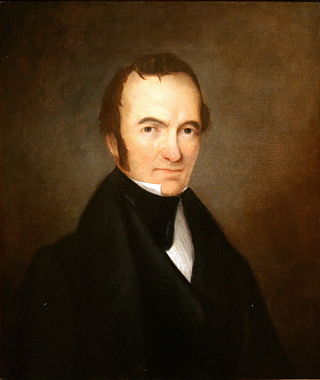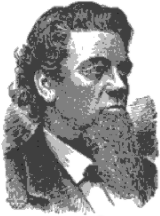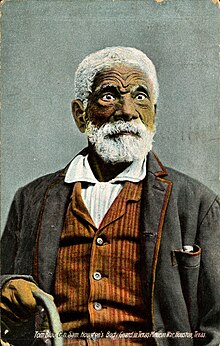
The Underground Railroad was a network of secret routes and safe houses established in the United States during the early to mid-19th century. It was used by enslaved African Americans primarily to escape into free states and from there to Canada. The network, primarily the work of free African Americans, was assisted by abolitionists and others sympathetic to the cause of the escapees. The slaves who risked capture and those who aided them are also collectively referred to as the passengers and conductors of the "Underground Railroad". Various other routes led to Mexico, where slavery had been abolished, and to islands in the Caribbean that were not part of the slave trade. An earlier escape route running south toward Florida, then a Spanish possession, existed from the late 17th century until approximately 1790. However, the network generally known as the Underground Railroad began in the late 18th century. It ran north and grew steadily until the Emancipation Proclamation was signed by President Abraham Lincoln. One estimate suggests that, by 1850, approximately 100,000 slaves had escaped to freedom via the network.

The Texas Revolution was a rebellion of colonists from the United States and Tejanos against the centralist government of Mexico in the Mexican state of Coahuila y Tejas. Although the uprising was part of a larger one, the Mexican Federalist War, that included other provinces opposed to the regime of President Antonio López de Santa Anna, the Mexican government believed the United States had instigated the Texas insurrection with the goal of annexation. The Mexican Congress passed the Tornel Decree, declaring that any foreigners fighting against Mexican troops "will be deemed pirates and dealt with as such, being citizens of no nation presently at war with the Republic and fighting under no recognized flag". Only the province of Texas succeeded in breaking with Mexico, establishing the Republic of Texas. It was eventually annexed by the United States.

Samuel Houston was an American general and statesman who played an important role in the Texas Revolution. He served as the first and third president of the Republic of Texas and was one of the first two individuals to represent Texas in the United States Senate. He also served as the sixth governor of Tennessee and the seventh governor of Texas, the only individual to be elected governor of two different states in the United States.

Stephen Fuller Austin was an American-born empresario. Known as the "Father of Texas" and the founder of Anglo Texas, he led the second and, ultimately, the successful colonization of the region by bringing 300 families and their slaves from the United States to the Tejas region of Mexico in 1825.

The Battle of San Jacinto, fought on April 21, 1836, in present-day La Porte and Deer Park, Texas, was the final and decisive battle of the Texas Revolution. Led by General Samuel Houston, the Texan Army engaged and defeated General Antonio López de Santa Anna's Mexican army in a fight that lasted just 18 minutes. A detailed, first-hand account of the battle was written by General Houston from the headquarters of the Texan Army in San Jacinto on April 25, 1836. Numerous secondary analyses and interpretations have followed.

The Fugitive Slave Act or Fugitive Slave Law was a law passed by the 31st United States Congress on September 18, 1850, as part of the Compromise of 1850 between Southern interests in slavery and Northern Free-Soilers.

David Gouverneur Burnet was an early politician within the Republic of Texas, serving as the interim president of Texas in 1836, the second vice president of the Republic of Texas (1839–1841), and the secretary of State (1846) for the new state of Texas after it was annexed to the United States.

Richard King was a riverboat captain, Confederate, entrepreneur, and most notably, the founder of the King Ranch in South Texas, which at the time of his death in 1885 encompassed over 825,000 acres (3,340 km2).

Margaret Lea Houston was First Lady of the Republic of Texas during her husband Sam Houston's second term as President of the Republic of Texas. They met following the first of his two non-consecutive terms as the Republic's president, and married when he was a representative in the Congress of the Republic of Texas. She was his third wife, remaining with him until his death.

The history of slavery in Texas began slowly at first during the first few phases in Texas' history. Texas was a colonial territory, then part of Mexico, later Republic in 1836, and U.S. state in 1845. The use of slavery expanded in the mid-nineteenth century as White American settlers, primarily from the Southeastern United States, crossed the Sabine River and brought enslaved people with them. Slavery was present in Spanish America and Mexico prior to the arrival of American settlers, but it was not highly developed, and the Spanish did not rely on it for labor during their years in Spanish Texas.
Samuel Walker Houston was an American pioneer in the field of education.
Joshua Houston (1822–1902) was born into slavery in 1822 on the Perry County, Alabama plantation owned by Temple Lea and Nancy Moffette Lea, parents of Margaret Lea Houston. When Margaret married Sam Houston, Joshua moved to Texas with the newlyweds. Joshua traveled with Sam Houston and worked on the construction of Raven Hill in Huntsville, Texas. He became educated and was elected to local public offices. He had three wives and was the father of eight children, including Samuel Walker Houston. Joshua was a Texas delegate at the 1884 Republican National Convention. He helped establish the Bishop Ward Normal and Collegiate Institute.

Samuel "Sam" Houston represented the state of Tennessee in the United States House of Representatives, and was elected Governor of Tennessee. He resigned the governorship in 1829 and lived with the Cherokee in the Arkansas Territory. The Cherokee named him "Golanv" meaning "The Raven". In 1832 he moved to Coahuila y Tejas and was a signer of the Texas Declaration of Independence on March 2, 1836. Houston was appointed commander-in-chief of the Provisional Army of Texas, and accepted the surrender of Mexican general Antonio López de Santa Anna following the Battle of San Jacinto.

The Latter Day Saint movement has had varying and conflicting teachings on slavery. Early converts were initially from the Northern United States and opposed slavery, believing that their opposition was supported by Mormon scripture. After the church base moved to the slave state of Missouri and gained Southern converts, church leaders began to enslave people. New scriptures instructing Latter-Day Saints not to intervene in the lives of the enslaved people were revealed. A few enslavers joined the church, and when they moved to Nauvoo, Illinois, they illegally took their enslaved people with them, even though Illinois was a free state.
Matilda Hicks and Nathaniel Jackson (1798–1865) were an interracial couple who helped fleeing enslaved people between 1859 and 1865. They offered a safe-haven and a ferry ride across the Rio Grande into Mexico. They were driven by their religious and anti-slavery beliefs. It is said they helped anyone in need.

Sam Houston was a slaveholder who had a complicated history with the institution of slavery. He was the president of the independent Republic of Texas, which was founded as a slave-holding nation, and governor of Texas after its 1845 annexation to the union as a slave-holding state. He voted various times against the extension of slavery into the Western United States and he did not swear an oath to the Confederate States of America, which marked the end of his political career.
Nancy Moffette Lea (1780–1864) was the mother of Margaret Lea Houston and mother-in-law of Sam Houston. She was an integral member of the Houston family, running the household when Margaret was ill or pregnant. She is believed to have helped her son-in-law convert and be baptized in 1854. In appreciation, she donated a bell to the Independence Baptist Church in honor of him. The wife of Temple Lea, she inherited an estate from her family that she managed. She purchased a cotton plantation which was operated by 50 enslaved people.

Joe Travis was an enslaved man who was one of the only survivors of the Battle of the Alamo. Joe was sold four times in his life, with his most well known owner being William B. Travis, a 19th century lawyer and soldier, who would later be the lieutenant colonel for The Battle of the Alamo.















